Despite its national significance, and boasting a history of over 2000 years, it would be natural to consider sake as “kokushu,” or Japan’s national brew. Yet surprisingly the government only designated it as such in 2012, when the then Minister of State for National Policy launched a program and policies to promote exports of sake and shochu (locally distilled spirits), as trade figures had risen to all time highs in 2010 and 2011.
The designation could not have happened at a more appropriate time. Amid sake’s increasing appearance on the wine lists of some of the world’s trendiest and most famous restaurants, the tipple has in fact been suffering a steady decline back home since consumption peaked in 1973.
Yet it’s too soon for observers and industry pundits to bemoan the beverage’s death knell. Yes, there are challenges for sake makers to overcome, but a number of trends and changes within the industry suggest that sake is evolving in order to overcome them. One such trend is the shift in consumer demographics. While sake has traditionally been the tipple of choice for older generations, more people from younger age groups are now embracing it, yet sometimes in different forms such as sparkling sake.
Renowned sake expert John Gauntner has said that sake’s evolution can generally speaking, be broken down into three categories: products, industry and technology.
Innovation
Firstly, products. As mentioned, sparkling sakes, as well as low alcohol varietals and fruit or yoghurt-flavored blends, have flooded the market, so to speak, and are responsible for encouraging newcomers – often women and younger people – to try sake. It should be noted though that production of these styles remains low, so despite manufacturing there is debate whether the styles constitute that significant a trend.
Gauntner also notes there have also been new pasteurization methods resulting in an overall improved quality of sake. Makers are also tending to store sake in glass bottles instead of casks during the aging period after production.
Increasing attention and publicity also surrounds funkier sakes such as the namazake, kimoto and yamahai styles, according to Takuya Ogura who runs a bar in western Tokyo specializing in these sakes. “While larger breweries are experimenting with sparkling and non-traditional kinds, there’s a resurgence among smaller makers to focus on old-school type sake,” he says. “These styles are more masculine in flavor, and it’s riskier and more laborious to produce them. A number of sake bars like mine focus on these selling these microbrews to all kinds of sake drinkers. I guess you could compare this overall movement to the resurgence in microbrewery beer.”
In line with the microbrewery analogy are changes in the sake industry, observes Ogura. “These smaller makers are often the new generation,” he says. “They are more willing to experiment and take risks. They are often more hands-on, actually brewing the sake themselves. This is in contrast to the larger brewer owners who usually have less of a connection as their Toji, or workers, may do the brewing.”
And while sake making has often been a male domain, there are new players, with breweries operated and managed by women, such as Mioya Shuzo in Ishikawa Prefecture. The “men only” rule was commonplace until the mid-1970s, when Ichishima Shuzo in Niigata Prefecture officially opened its doors to women. Non-Japanese can also be found at the helm of some breweries; Ogura notes that Briton Philip Harper is managing the Kinoshita brewery in Kyoto Prefecture.
Pass the Bubbly
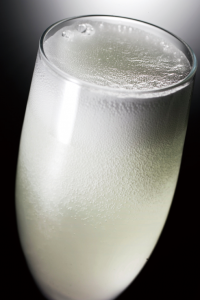 Germany’s Sebastian Vettel, F1 World Champion, stood at the winners’ podium at the 2013 Japanese Grand Prix, agitating and spraying the contents of the bottle over onlookers below.
Germany’s Sebastian Vettel, F1 World Champion, stood at the winners’ podium at the 2013 Japanese Grand Prix, agitating and spraying the contents of the bottle over onlookers below.
But it wasn’t Moet et Chandon, Bollinger, or another French champagne he was using to drench the crowd. Instead, he was using a bottle of sparkling sake specially created and designed for such a purpose: Okunomatsu Formula Nippon FN Junmai Daiginjo Premium Sparkling Sake.
Boasting champagne-like liveliness with notes of honey and melon on the nose, the beverage was created by the Okonomatsu kura in Fukushima Prefecture to celebrate victories at sporting events and other special occasions.
The FN may arguably be Japan’s most prominent sparkling sake, a small but growing subset of sake produced to woo new consumers to Japan’s national beverage.
Depending on whose PR material you read, sparkling sake is said to be ideal for sake neophytes, people [often young women with higher disposable incomes] who may not like — or cope — drinking traditional styles, and anyone wanting something different to try.
While sparkling sake is produced similarly to its regular counterpart, the fermentation process is halted sooner. Alcohol levels at this time are about half that of a normal brew, and there is much residual sugar. The sake is then pressed and bottled, allowing a secondary fermentation to occur, producing carbonation. The process is akin to making champagne.
Lower in alcohol than normal sake, most sparkling brands clock in at around 5~8 percent, similar to beer, and are generally sweeter on the palate. The fizz helps downplay this sweetness, however, instead resulting in a light, refreshing drink.
Many sparkling sakes are translucent in color, apart from seasonal or special varieties. In the latter, pigmentation and flavorings from flowers, seeds, colored rice and beans are typical; the Chikirin Hana Hou Hou Shu, for example, features an infusion of rose petals and hibiscus giving it a faint blush.
The Ichinokura brewery in Miyagi Prefecture also produces a number of different drinks. One of these is Suzune, a light-colored, low-alcohol sake, which carries a delicate foam and its resemblance to champagne makes it a favorite among women.
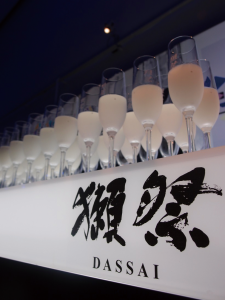 Apart from coloring, other sparkling sakes veer toward cloudiness. One such example is the Dassai Sparkling 50, a tangy, fizzy drop with a light mouthful but packing a 15 percent alcohol punch. This cloudiness is due to the sediment that settles in the bottle following the secondary fermentation.
Apart from coloring, other sparkling sakes veer toward cloudiness. One such example is the Dassai Sparkling 50, a tangy, fizzy drop with a light mouthful but packing a 15 percent alcohol punch. This cloudiness is due to the sediment that settles in the bottle following the secondary fermentation.
For those put off by sediment and prefer their sake clearer, place the bottle upright and leave it so for a couple of days. When serving, pour the sake slowly and carefully, so the sediment remains in the bottle.
Another major kura or brewery, Hakkaisan, has released a nigori or unfiltered brew, the Sparkling Hakkaisan Nigori Sake, a creamy and crisp drop owing its bubbles to added C02 instead of secondary fermentation.
While many sparkling sakes are designed to be drunk on their own or as a first drink, especially in the warmer months, most brews pair nicely with starters, soft, mild cheeses, fruits and sometimes even spicy foods, such as ceviche or other fish dishes.
Continuing Evolution
The industry is also evolving through embracing of the Internet and using social media in sales and marketing efforts to connect with old and new consumers, with breweries able to directly communicate with customers to open dialogue and discern what sells.
Technology has also helped reform the industry from the manufacturing side, asserts Gauntner. Complex and advanced machinery is generally being used to perform the more laborious tasks involved in making sake, thus freeing up the master brewers to intervene where necessary, maintaining quality control and an artisanal touch.
Finally, it should be noted that sake will only continue to evolve with the wealth of information now available to brewers, such as research results, textbooks and chemical analysis.
Sake Glossary
- Bihappo-seishu or bihassei-seishu – Alternative nomenclature for sparkling sake.
- Daiginjo – Premium sake with a seimaibuai of 50% or less. This sake is complex, yet smooth and aromatic. Enjoy slightly chilled.
- Ginjo – Sake with a seimaibuai of 60% or less. Often fragrant, delicate yet complex.
- Honjozo – Sake with a seimaibuai to 70%. Alcohol is added to the mash before pressing for a softer, less acidic result, often resulting in earthy undertones. If no alcohol is added, the sake is designated junmai, which is cleaner, smoother and more acidic.
- Kimoto – The original, traditional method of making sake’s yeast starter using natural lactation acid fermentation techniques, not very common nowadays.
- Koji – Rice mould integral to making sake, converting sugars to alcohol and determining the flavour profile.
- Koshu – Aged sake.
- Kura – Brewery.
- Namazake – Unpasteurized sake.
- Nigori sake – Unfiltered sake, identifiable by its creaminess.
- Seimaibuai – Percentage of rice milled. For example, a seimaibuai listed on a bottle label of 80% means that 20% of the outer grain has been removed.
- Yamahai-shikomi (yamahai) – Another variation on the brewing method in which the sake yeast starter is made.
By Jane Kitagawa
From WINING & DINING in Tokyo #44

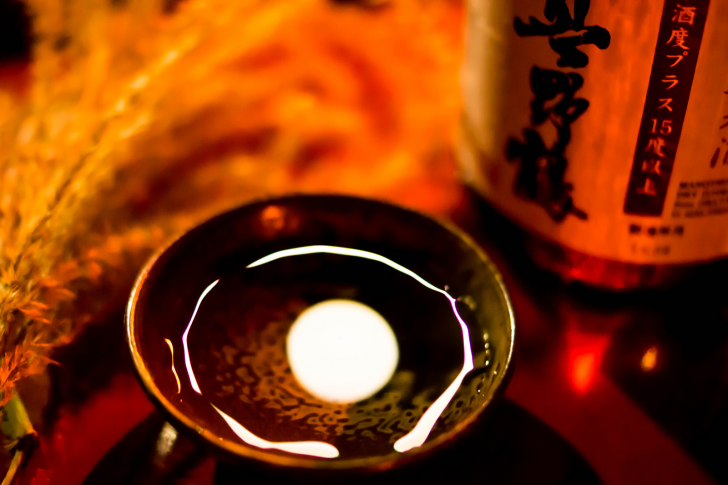

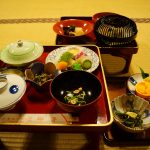


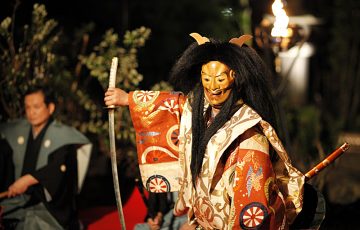
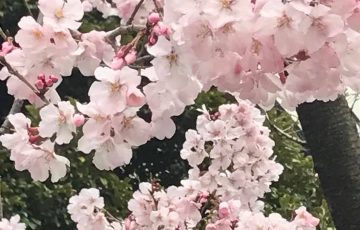


small-360x230.jpg)




Recent Comments